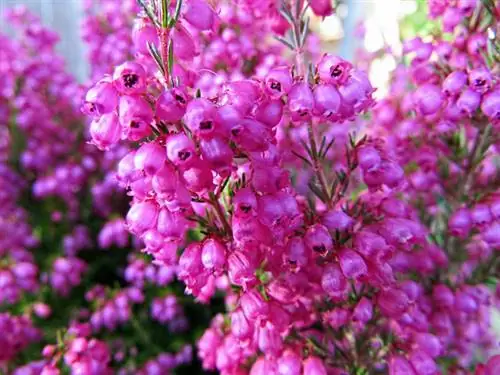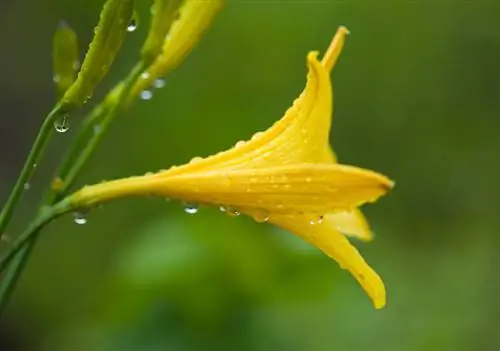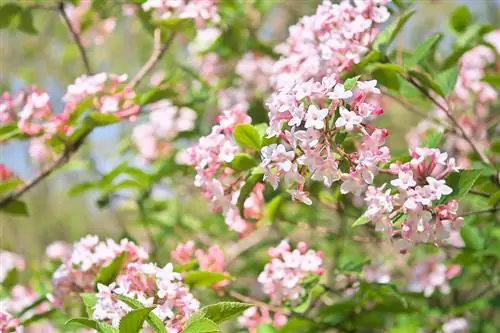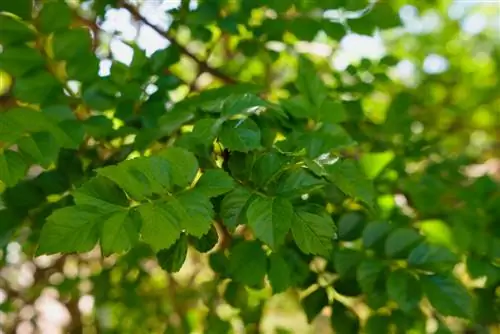- Author admin [email protected].
- Public 2023-12-16 16:46.
- Last modified 2025-01-23 11:20.
Since the needs of heather (Calluna vulgaris) and snow or winter heather (Erica carnea) are quite different, attention should be paid to the perhaps visually small but definitely subtle difference between the different plant species. With the right choice of location, you have already laid the perfect foundation for the winter heather for grateful flowers without extensive care.
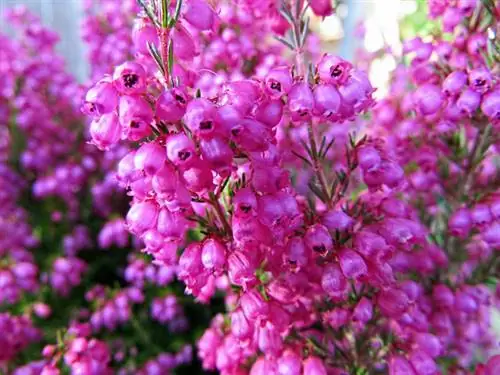
How do I properly care for my winter heather?
Winter heather care includes regular watering without waterlogging, spring fertilization with special fertilizer, pruning after flowering and protection from pests such as the black weevil. Choose a sunny location and prevent the root balls from drying out.
How often should the winter heather be watered?
The root ball of the winter heather should never dry out completely, so depending on the location, regular, well-dosed watering should be ensured, especially in summer. If possible, the plants should not be overwatered; water as close to the ground as possible around the plants. Snow heather dries out significantly more in the balcony box than in the garden soil. Therefore, due to the weather, specimens in the balcony box may have to be kept frost-free for a few days in order to be supplied with enough moisture even in winter.
When can the winter heather be transplanted?
Choose a time in spring to plant or transplant the winter heather, if possible immediately after the flowering period.
Why should winter heather be cut?
The snow heather naturally grows relatively compactly and reaches a maximum height of around 30 cm. In this regard, there is not necessarily a reason to trim the plants even when used as ground cover. However, pruning the plants annually or at least every two years has the following effects:
- more compact growth habit (bearing the snow load better)
- promotes plant rejuvenation and prevents bald spots
- has a positive effect on the abundance of flowers in the following year
Which pests or diseases can be dangerous to winter heather?
Occasionally, an infestation by the black-mouthed weevil and its larvae can be detected on the Schneeheide. The beetles can be collected by hand and the larvae can be controlled with nematodes. Otherwise, ailing plants are usually the result of care errors, such as root rot caused by persistent waterlogging.
Should the winter heather be fertilized?
From spring to autumn, the snow heath can be supplied with suitable special fertilizer (€8.00 on Amazon) from specialist retailers, but in a relatively weak concentration.
Is the name Schneeheide justified and is it a hardy plant species?
Since the winter heather or snow heather comes from alpine areas, it can withstand winter frosts down to around minus 25 degrees Celsius under otherwise suitable location conditions.
Tip
So that you can really enjoy the hardy winter heather for many years to come, you should always prevent the root balls from drying out, even in winter. In addition, the location for this sun-loving plant must not be too shady.

